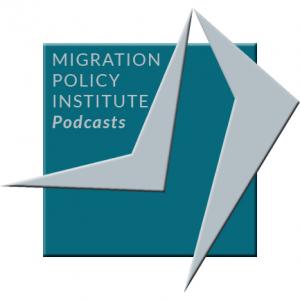Migration Policy Institute Podcasts
2020-03
Episodes

Tuesday Mar 31, 2020
Tuesday Mar 31, 2020
Governments are facing urgent pandemic-related questions. One of the more pressing ones: Who is going to harvest crops in countries that rely heavily on seasonal foreign workers? In this podcast, MPI experts Hanne Beirens, Kate Hooper, and Camille Le Coz, examine ways in which countries could address labor shortages in agriculture, including recruiting native-born workers and letting already present seasonal workers stay longer. Catch an interesting discussion as border closures have halted the movement of seasonal workers even as crops are approaching harvest in some places.
Read the related commentary: A Race Against the Clock: Meeting Seasonal Labor Needs in the Age of COVID-19
View MPI's resources on COVID-19

Tuesday Mar 24, 2020
Tuesday Mar 24, 2020
Governments around the world have adopted significant migration management measures to try to contain and halt the spread of COVID-19. Border closures, travel restrictions, prohibitions on arrivals from certain areas, and heightened screening have been among the leading policy responses, initially to try to block COVID-19 from crossing borders and later, as the pandemic became a global one, as part of a raft of mobility restrictions seeking to mitigate further spread. The success of these restrictions in stemming the initial breakout of public health threats across international borders as well as their role in mitigating "community spread" within affected states is a matter of dispute. More clear, however, is that internal measures—such as business closures and "lockdown" orders—are likely to be borne disproportionately by the most vulnerable, including refugees, unauthorized populations, and other immigrants. This webinar, organized by the Migration Policy Institute and the Zolberg Institute on Migration and Mobility at The New School, discussed the state of play around the globe and examined where migration management and enforcement tools may be useful and where they may be ill-suited to advancing public health goals. Experts compared the current response (and rhetoric) to what has been seen during prior major public health crises in the United States and internationally, and discussed how this is likely to affect future mobility and international cooperation on issues such as humanitarian protection.
Speakers included:
Doris Meissner, Senior Fellow, MPI, and former Commissioner, U.S. Immigration and Naturalization ServiceNatalia Banulescu-Bogdan, Associate Director, International Program, Migration Policy Institute (MPI)T. Alexander Aleinikoff, University Professor and Director, Zolberg Institute on Migration and Mobility, and former Deputy UN High Commissioner for RefugeesAlan Kraut, Distinguished University Professor of History, American University, and MPI Nonresident FellowView all MPI resources related to COVID-19.

Thursday Mar 12, 2020
Thursday Mar 12, 2020
Even before the Trump administration’s public-charge rule took effect on February 24, there was evidence of sizeable disenrollment from public benefit programs by legal immigrants afraid that use by themselves or their U.S.-born children could doom a future application for legal permanent residence.
These “chilling effects” result from confusion about which benefit programs and populations are considered under the new public-charge determination, or fear that the government could change the rules in the future. Yet the number of noncitizens who could be deemed ineligible for a green card based on existing use of a public benefit is very small, as a Migration Policy Institute (MPI) analysis shows.
On this webinar, MPI experts, Julia Gelatt, Mark Greenberg, and Randy Capps, released their estimates of the populations that could be deemed ineligible for a green card based on existing benefits use. During the webinar, the experts also discussed the far larger consequences of the public-charge rule, through its chilling effects and imposition of a test aimed at assessing whether green-card applicants are likely to ever use a public benefit in the future. This wealth test holds the potential to reshape legal immigration to the United States in far more significant ways than any other measure taken by the administration to date.
None of the comments on this webinar should be considered as legal advice; instead, all information and content provided are for general informational purposes only. Individuals with concerns or questions should consult with an attorney.

Thursday Mar 12, 2020
Thursday Mar 12, 2020
Under the federal Every Student Succeeds Act (ESSA), states must report a wide range of information about their students’ English language arts and math standardized test scores, graduation rates, and more. They must also break these data down to show how students with certain characteristics—subgroups including racial/ethnic groups, students with disabilities, and English Learners (ELs)—are doing. This wealth of data is meant to help policymakers, practitioners, and community members identify schools that need to do a better job of helping ELs learn. But for this to be possible, it must be clear who states are including in the EL subgroup—something that varies across types of data and that is not always clear marked on state student performance reports or online dashboards. This podcast features a discussion between the Migration Policy Institute’s Margie McHugh and Julie Sugarman about how to understand the varying composition of the EL subgroup, and why understanding these technical differences matters when making decisions about how ELs and schools are faring. They also talk about different groups of ELs: newcomers, students with interrupted formal education, and long-term ELs, and data collection around these different subgroups. The related report can be found here: